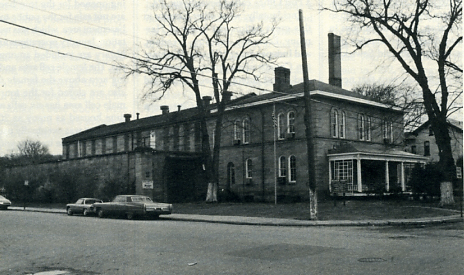
Click Here to Return to Milestones
The Beaver County jail was constructed in 1856. The original construction included the male cell block, six cells which ended up being for female inmates and the front section of the jail, which used to be the home of the Warden. The last time a Warden actually lived at the jail is believed to be in the early 1970's. When the jail was closed in November of 2000, it was the oldest operating jail in Pennsylvania and probably one of the oldest in the country.
There were two executions in the history of the jail. Records indicate that the executions took place in 1863 and 1904. It appears that executions at the jail were carried out by walking the individual out the door located at the top of the steps on the second floor. The individuals were walked out the door onto a platform where they were hanged. The cost of the original jail was $28,852.95 according to county records.

In the last days of the jail there were 210 inmates housed in the jail and the Work Release building located next door. The jail operated under a Federal judges order since the early 1990's. The Consent Decree established maximum numbers of inmates which could be housed at the jail, medical treatment for the inmates, recreation standards for the inmates, a law library for the inmates and ordered more staff to be put on to run the jail.
At the end of its use, the jail was processing through 2200 commitments a year and serving 700 to 750 meals a day. The Warden's office and administrative functions were located across Market Street in the Beaver Post Office. The County was housing inmates in the Lawrence County Jail, Cambria County Jail and Penn Pavilion in New Brighton due to the overcrowding of the jail. The County actually spent close to $800,000 to house these inmates in other institutions.
Several areas of the jail are not being opened for the tour because they are not safe for the public to tour. The basement area, which was used for visitation, laundry operations and the law library are included among these areas. The female cell area and the housing area above the female dorm area also are closed for the tours. The female cell area has six cells and at one time housed as many as 20 females. This area was eventually used for segregating female inmates with psychological problems and disciplinary segregation. The dormitory area was used for housing the workers who served meals, cleaned the jail, ran the laundry and worked in the kitchen.